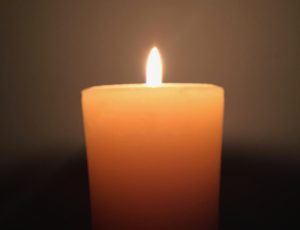 I’m not sure when I began reading books by Thomas Merton. Probably late high school or early college. I’m also not sure how I discovered them. Though I was naturally drawn to contemplative prayer, the word was unfamiliar to me until Merton’s writings provided it. “Contemplative” was not something you heard about sitting in the pews on Sundays or even in religion classes. Not usually. Reflecting on that later, I never understood why. Christianity has a long, rich contemplative tradition.
I’m not sure when I began reading books by Thomas Merton. Probably late high school or early college. I’m also not sure how I discovered them. Though I was naturally drawn to contemplative prayer, the word was unfamiliar to me until Merton’s writings provided it. “Contemplative” was not something you heard about sitting in the pews on Sundays or even in religion classes. Not usually. Reflecting on that later, I never understood why. Christianity has a long, rich contemplative tradition.
Hunger for deeper prayer experience
Some of my friends from those early days, searching as college students do and longing for an alternative to rote prayers and rituals that, for them, had become mindless habit, explored meditation found in Eastern traditions. They hungered for a deeper relationship with God.
A way to sink deeply into that relationship is contemplative prayer. Not reserved for “special” people or for a few “advanced” souls as sometimes thought, it is simply resting in silence with the loving God who dwells within each of us.
I was lucky to find not only Thomas Merton, but also a small community that introduced me to classics in Christian literature like Teresa of Avila and John of the Cross and provided a vocabulary to talk about contemplative prayer. What a gift it was to finally have others with whom to pray and share the journey.
Later, I found the Desert Fathers and Mothers, The Cloud of Unknowing (written by an anonymous 14th century English monk), John Cassian, Julian of Norwich, and other mystical writers. I had begun to practice Lectio Divina and realized that my longtime journaling was part of my contemplative prayer journey (something I love to share at retreats and workshops). Time spent with Benedictine monks and sisters broadened and deepened my prayer experience.
The hunger for contemplative prayer among many Christians remains as deep as ever. Even if it’s not talked about much in parishes, there are many resources available today.
What prompted me to reflect on this was the passing on October 25 of Fr. Thomas Keating, at age 95. He is likely the most well-known Trappist monk since Merton. Keating is recognized for his development and promotion (along with others including M. Basil Pennington and William Meninger) of the centering prayer method of Christian meditation.
Beginnings of Centering Prayer
This prayer practice began in the 1970s at Saint Joseph’s Abbey in Spencer Massachusetts where Keating was abbot for twenty years. It was a prompted by conversations with young Christians, who, like my college friends, were seeking a prayer path that was meditative and transformative. They stopped by the Abbey to ask directions to a Buddhist meditation center that had been opened nearby in what once had been a Catholic retreat house. When Keating asked the young searchers why they didn’t look for a path in the Christian tradition, their answer was the same as my friends’ might have been: There’s a Christian path?
Keating talked to the monks at the Abbey about developing a method of meditation—based on Scripture and Christian tradition—that would be accessible to anyone, those beyond the monastery walls as well as inside them. The result is what is now known as Centering Prayer.
Resources
There are many resources available if you are interested in learning more about it; here are a few: Open Mind, Open Heart by Keating; Finding Grace at the Center by Thomas Keating, M. Basil Pennington, OCSO and Thomas E. Clark, SJ.; Centering Prayer and Inner Awakening by Episcopalian priest Cynthia Bourgeault. The Contemplative Outreach, an organization Keating founded in 1984, has a website full of information and resources. Some parishes have Centering Prayer groups that meet weekly.
Centering Prayer is not the only way to practice and nurture one’s contemplative life. As Fr. Keating wrote in a selection found on the Contemplative Outreach website addressing different approaches to meditative prayer: “In Buddhism there are a wide variety of methods (perhaps techniques would be a better designation). Why shouldn’t Christians have a few?”
There are more than a few! If you find yourself drawn to contemplation, Centering Prayer is one method to consider. It is popular, accessible, and practiced by hundreds of thousands around the globe.
Thank you, Fr. Keating.
©2018 Mary van Balen
Originally published is similar format in The Catholic Times 11.11.18
